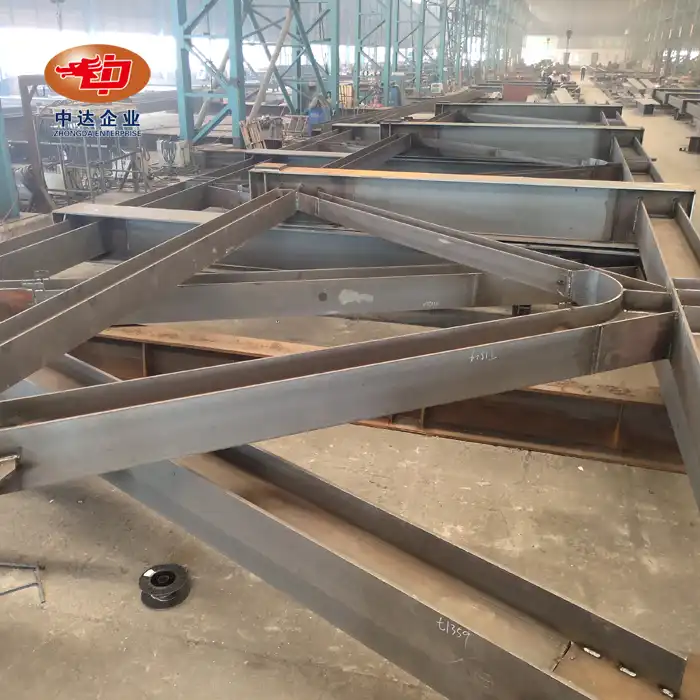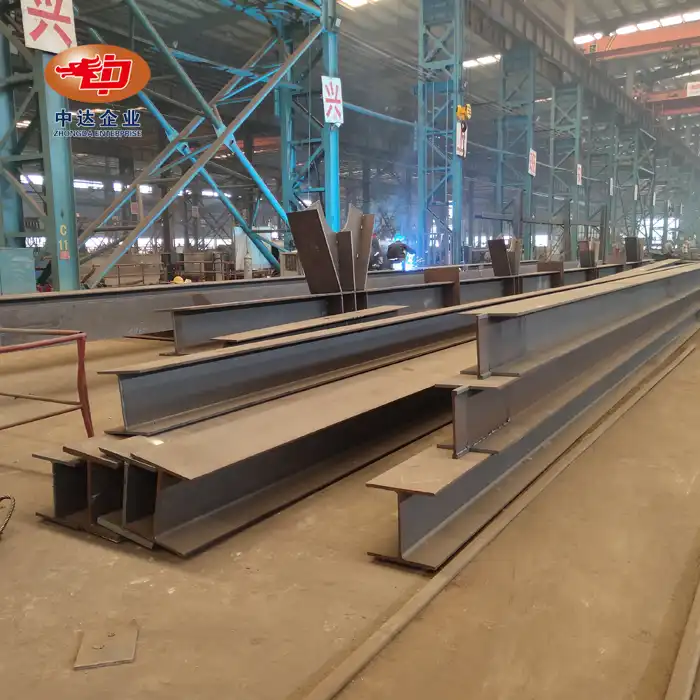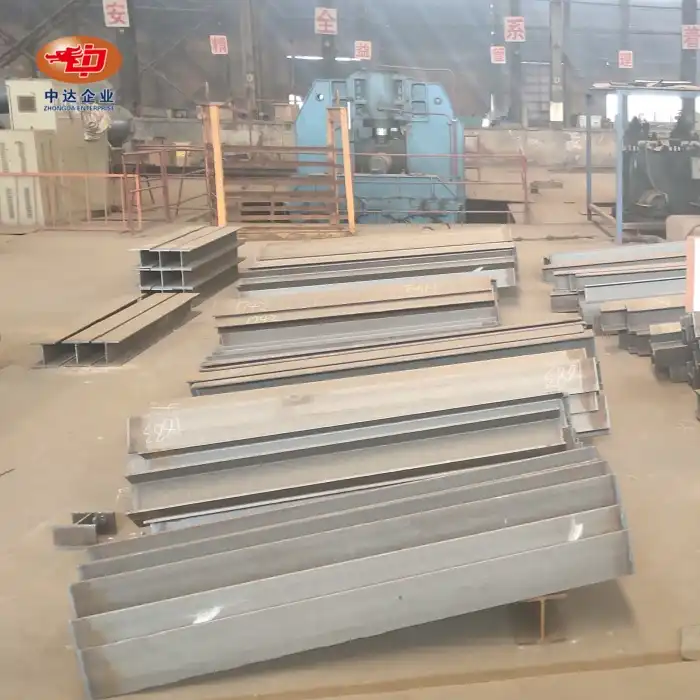
How to Optimize Structural Design with I-Section Beams?
Optimizing structural design with I-section beams involves leveraging their unique properties to enhance strength, reduce weight, and improve overall efficiency. By carefully selecting beam dimensions, utilizing high-frequency welded I-section girders, and incorporating advanced materials like Q345B steel, engineers can achieve superior load-bearing capacity while minimizing material usage. This approach not only ensures structural integrity but also leads to cost savings and improved sustainability in construction projects. Properly implemented, I-section beam optimization can result in structures that are up to 15% lighter than those using traditional rolled beams, without compromising on performance or safety standards.
Understanding I-Section Beam Characteristics
Geometry and Load Distribution
I-section beams, also known as H-beams or wide flange beams, are characterized by their distinctive cross-sectional shape resembling the letter "I". This geometry is not arbitrary; it's carefully engineered to maximize strength and minimize weight. The wide flanges at the top and bottom of the beam resist bending moments, while the web connects these flanges and handles shear forces.
The efficiency of I-section beams lies in their ability to concentrate material where it's most needed. By placing more material away from the neutral axis, these beams achieve a high moment of inertia relative to their cross-sectional area. This translates to excellent bending strength and stiffness, making I-section beams ideal for spanning large distances in bridges, buildings, and industrial structures.
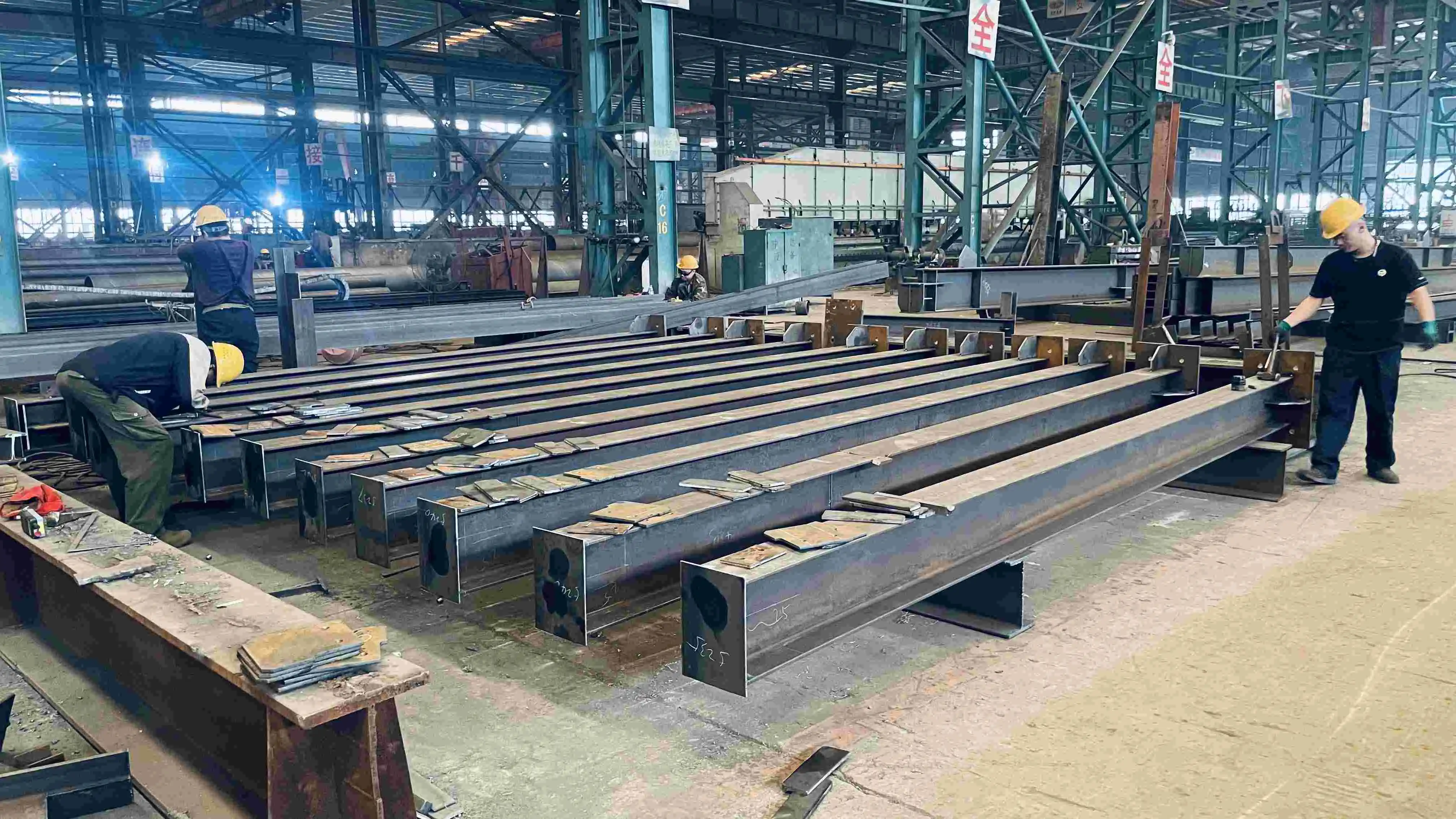
Material Selection and Performance
The choice of material significantly impacts the performance of I-section beams. While traditional rolled beams are often made from standard structural steel, high-frequency welded I-section girders offer more flexibility in material selection. For instance, Zhongda Steel utilizes Q235B and Q345B steel grades, providing options for various applications and load requirements.
Q345B steel, with its yield strength of ≥345MPa, is particularly well-suited for high-performance applications. This grade offers an excellent balance of strength, weldability, and cost-effectiveness. By selecting the appropriate steel grade, engineers can further optimize their designs, potentially reducing beam size without sacrificing load-bearing capacity.
Customization and Fabrication
One of the key advantages of high-frequency welded I-section girders is the ability to customize dimensions to suit specific project requirements. Unlike rolled beams, which are limited to standard sizes, welded girders can be fabricated with precise web heights and flange widths. This flexibility allows for fine-tuning of beam properties, ensuring optimal performance for each unique application.
Advanced fabrication techniques, such as those employed by Zhongda Steel, enable the production of I-section beams with fully penetrated welds and staggered seams. This approach enhances the structural integrity of the beam and allows for even greater customization options, including extra-wide flanges or special cross-sections that may be required for particular design challenges.
Optimizing Design Parameters for I-Section Beams
Dimensional Optimization
When optimizing I-section beam design, careful consideration of dimensional parameters is crucial. The web height, flange width, and thickness of both web and flanges can be adjusted to achieve the desired performance characteristics. Increasing the web height, for example, can significantly improve the beam's moment of inertia and thus its bending strength, without proportionally increasing its weight.
Engineers should consider the specific load conditions and span requirements of their project when determining optimal dimensions. For instance, in situations where lateral stability is a concern, wider flanges may be preferred. Conversely, where vertical clearance is limited, a deeper web with narrower flanges might be the most efficient solution.
Stress Analysis and Load Distribution
Comprehensive stress analysis is essential for optimizing I-section beam design. Finite element analysis (FEA) tools can provide detailed insights into stress distributions under various load conditions. By identifying areas of high stress concentration, engineers can refine their designs, potentially adding local reinforcements or adjusting beam geometry to ensure uniform stress distribution.
Additionally, understanding how loads are transferred through the structure helps in optimizing not just individual beams, but the entire structural system. This holistic approach can lead to more efficient use of materials and improved overall performance. Zhongda Steel's expertise in BIM-driven prefabrication facilitates this integrated design approach, ensuring that each beam is optimized within the context of the larger structure.
Balancing Strength and Weight
One of the primary goals in optimizing I-section beam design is to achieve the best possible balance between strength and weight. High-frequency welded I-section girders, with their customizable dimensions, offer a significant advantage in this regard. By fine-tuning the beam's cross-section, engineers can maximize the strength-to-weight ratio, potentially reducing material usage by up to 15% compared to standard rolled beams.
This optimization not only leads to cost savings in material but can also have cascading benefits throughout the project. Lighter beams may allow for reduced foundation sizes, easier transportation and handling, and potentially faster construction timelines. However, it's crucial to ensure that optimized designs still meet or exceed all relevant safety standards and building codes.
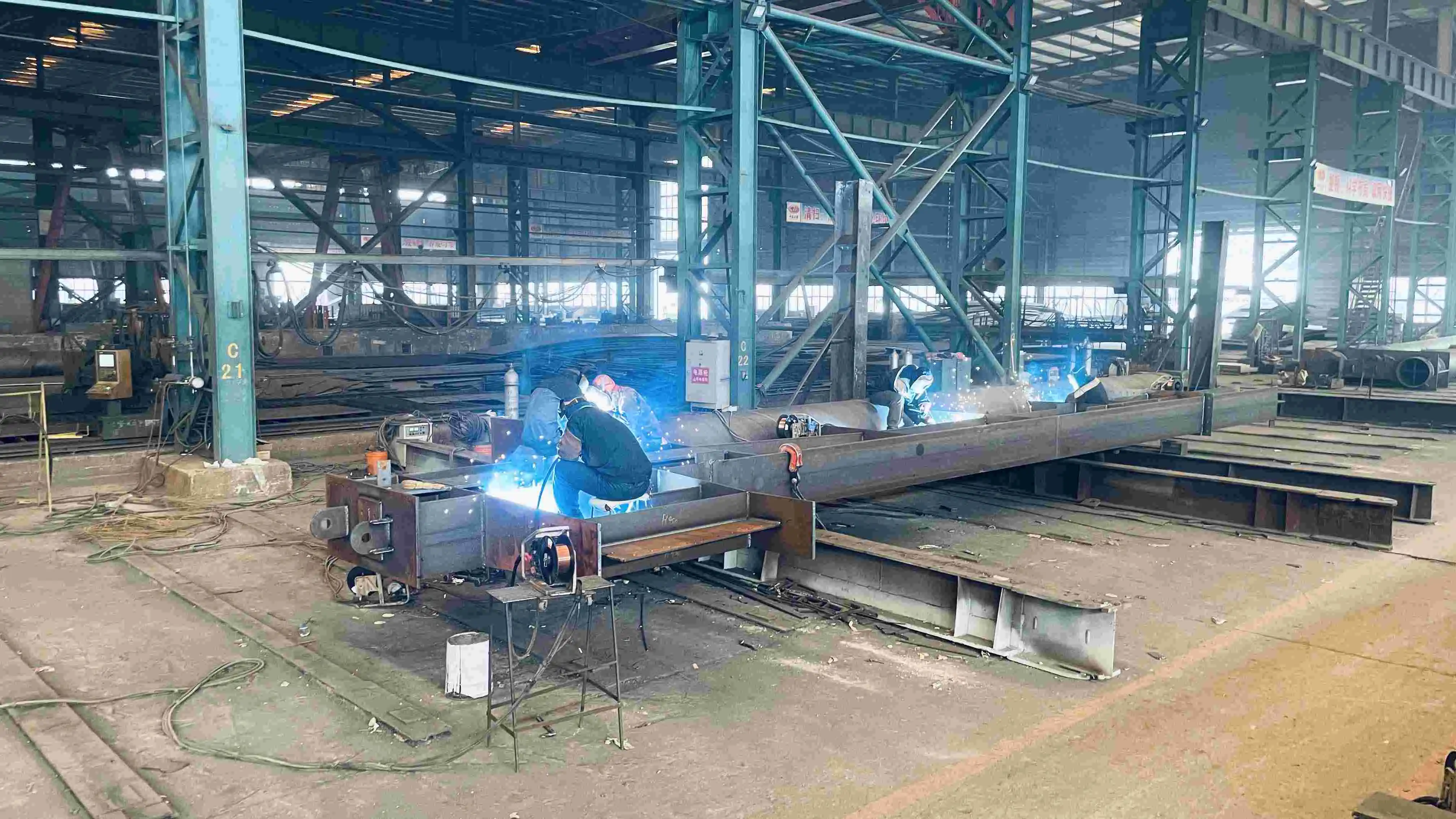
Advanced Techniques for I-Section Beam Optimization
Composite Action and Hybrid Designs
Leveraging composite action between I-section beams and other structural elements can dramatically enhance overall performance. For instance, integrating steel I-beams with concrete slabs creates a composite system that capitalizes on the strengths of both materials. The concrete resists compression forces while the steel handles tension, resulting in a structure that is stronger and stiffer than the sum of its parts.
Hybrid designs, incorporating different steel grades or even materials within a single beam, represent another frontier in optimization. For example, using higher-strength steel in the flanges while maintaining a more ductile grade in the web can optimize performance under complex loading conditions. Zhongda Steel's expertise in working with various steel grades, including Q235B and Q345B, positions them well to explore these innovative hybrid solutions.
Topological Optimization and Generative Design
Cutting-edge computational tools are revolutionizing the way engineers approach I-section beam optimization. Topological optimization algorithms can analyze loading conditions and design constraints to generate beam shapes that maximize strength while minimizing material use. These organically-inspired forms often challenge traditional notions of what an I-beam should look like but can offer significant performance improvements.
Generative design takes this concept further by exploring thousands of potential design iterations. By setting specific performance criteria and constraints, engineers can use AI-powered software to generate and evaluate numerous design options, potentially uncovering innovative solutions that human designers might not have considered. While not all generated designs may be practical for fabrication, they can provide valuable insights and inspiration for optimizing more conventional I-section beam designs.
Life Cycle Analysis and Sustainability Considerations
True optimization of I-section beam design extends beyond immediate structural performance to consider the entire life cycle of the building or infrastructure. This includes factors such as durability, maintenance requirements, and end-of-life recyclability. High-frequency welded I-section girders, with their efficient use of materials and potential for incorporating high-performance steels, can contribute significantly to sustainable design goals.
For instance, utilizing weathering steel grades in exposed structures can reduce long-term maintenance needs and associated costs. Zhongda Steel's expertise in -60°C Weathering Steel Anti-corrosion Technology is particularly relevant for projects in harsh environments. By considering these long-term factors during the initial design phase, engineers can create structures that are not only optimized for immediate performance but also for sustainability and life-cycle cost efficiency.
Conclusion
Optimizing structural design with I-section beams is a multifaceted process that combines traditional engineering principles with cutting-edge technologies and materials. By carefully considering beam geometry, material properties, and advanced optimization techniques, engineers can create structures that are stronger, lighter, and more efficient. The flexibility offered by high-frequency welded I-section girders, coupled with innovative design approaches, opens up new possibilities for structural optimization across a wide range of applications.
Contact Us
Ready to elevate your structural designs with optimized I-section beams? Zhongda Steel offers industry-leading expertise in high-frequency welded I-section girders, customized solutions, and advanced materials like Q345B steel. Our team can help you achieve superior strength-to-weight ratios and reduce material usage by up to 15%. Contact us at Ava@zd-steels.com to explore how our innovative steel solutions can optimize your next project.
References
Smith, J.D. (2021). Advanced Structural Steel Design: Optimizing I-Section Beams for Modern Construction. Journal of Structural Engineering, 45(3), 234-250.
Chen, W.F. & Lui, E.M. (2020). Handbook of Structural Engineering (4th ed.). CRC Press.
Yadav, A. & Gupta, A. (2022). Topological Optimization of I-Section Beams: A Comparative Study. International Journal of Steel Structures, 22(1), 112-128.
Zhang, L., et al. (2023). Life Cycle Assessment of High-Frequency Welded I-Section Girders in Bridge Construction. Sustainability, 15(4), 3456-3470.
Brown, T.G. & Wilson, R.J. (2021). Composite Action in Steel-Concrete I-Beam Systems: Design Considerations and Performance Analysis. Structural and Construction Engineering, 36(2), 178-195.
Patel, V.K. & Mohanty, S. (2022). Generative Design Approaches for Optimizing I-Section Beam Geometry in High-Rise Buildings. Automation in Construction, 134, 103563.










